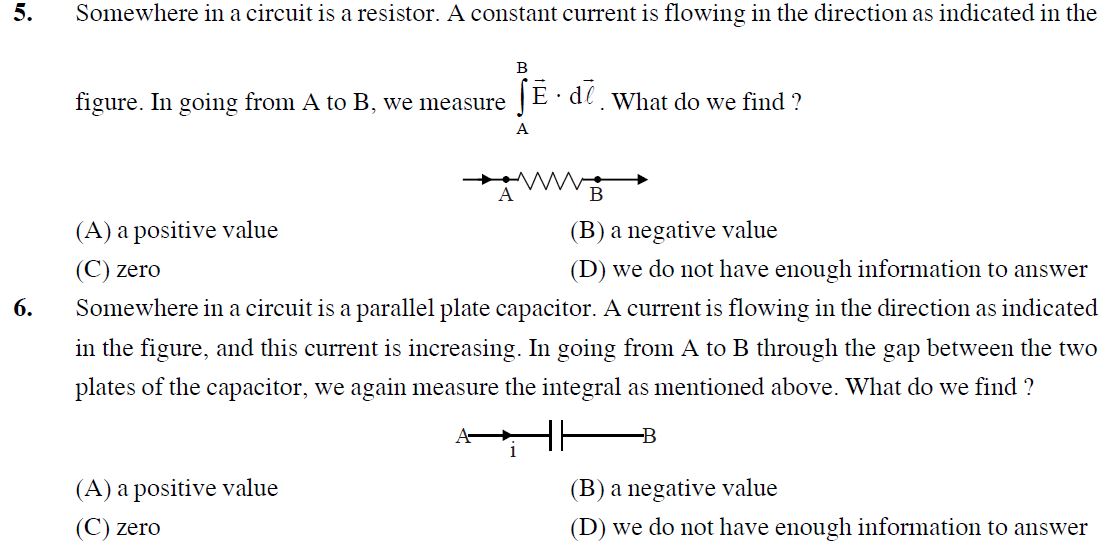1 Answers
Sourish Ghosh
·2014-05-03 06:00:42
5)
VB - VA = -∫E.dl
→ VA - VB = ∫E.dl
Since current is from A to B, VA > VB
→ ∫E.dl > 0
6)
Since there is a current in the path, there must be a resistor attached to the capacitor.
VA - VB = ∫E.dl
Potential difference across a capacitor is given by,
V = V0(1 - et/Ï„)
Now we don't know whether the capacitor is in steady state, transient state or 0+ state.
Hence V can be +ve or 0.
 Aditya Agarwal Thanks. But what is the significance of the current increasing in the second case?
Upvote·0· Reply ·2014-05-03 06:09:25
Aditya Agarwal Thanks. But what is the significance of the current increasing in the second case?
Upvote·0· Reply ·2014-05-03 06:09:25 Akash Anand Excellent job Sourish ...keep it up...give your best this time :)
Akash Anand Excellent job Sourish ...keep it up...give your best this time :)
